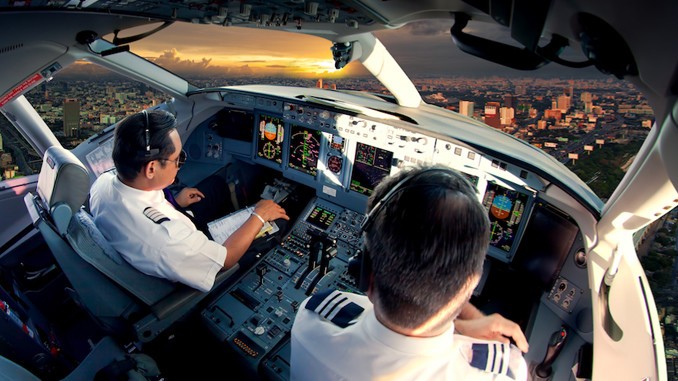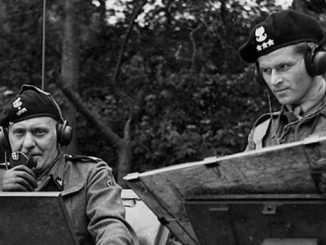
Kto pilotuje samolot?
Bardzo interesujący artykuł, wskazujący poważny problem współczesnego komercyjnego lotnictwa pasażerskiego. Większość pilotów nie przechodzi wyczerpującego szkolenia, przygotowującego do samodzielnego reagowania na ekstremalne sytuacje, które mogą przydarzyć się w trakcie lotu.. Nie poświęca się dzisiaj wystarczająco dużo czasu na naukę sztuki pilotażu. Uczy się pilotów, by panowali nad statkiem powietrznym tylko poprzez skomputeryzowany system kontroli lotu. W rezultacie piloci pasażerskich linii lotniczych nabywają umiejętności latania komputerem, a nie samolotem. Kiedy komputer nawala, rezultaty mogą być katastrofalne.
[Kapitan Matt Sheehy jest jednym z członków kanadyjskiej delegacji, która składając w październiku 2018 wieńce pod pomnikiem generała Stanisława Maczka zamierza uhonorować Polskę i Polaków]
Pilots used to be in command of their airliners, but automation is taking over and we are seeing the results.
Mankind has an extraordinary capacity for problem-solving once the problem is recognized, yet we particularly dislike acknowledging problems without an easy or quick solution. That is where the global aviation industry finds itself today.
Recent tragic air accidents in Asia, Ukraine, off the coast of Brazil, at San Francisco and other locations show a system under stress and in need of reform. Why was a commercial airliner allowed to fly over a war zone where surface-to-air missiles were known to be used? With much of the Middle East in a state of conflict the geographic zones we need to worry about are increasing. The responsibilities of aircrew, and especially captains, are becoming ever more onerous and complicated.
The tragic crash in 2009 of Air France flight 447 from Rio de Janeiro to Paris is another example of circumstances overwhelming the pilots. Both the Air France and the recent Air Asia crashes involved Airbus aircraft that are highly automated and can supposedly fly without a pilot. When ice interfered with the sophisticated autopilot system on the Air France flight the pilots became confused and disorientated and lost control of the aircraft. Pilot error was determined to be the cause of the crash. It remains to be seen what will be the determination in the Air Asia investigation.
We have made such strides in aircraft management technology we have almost cut the pilot out of the loop. Yet when that technology fails or is negated, the pilot must be able to take over and fly the aircraft — and airmanship is a quickly disappearing art.
Airlines and the airline industry seem convinced that technology alone holds the key to safety and efficiency. They may be right about efficiency but on the issue of safety the pilot is still the essential ingredient.
The hard truth is we are not spending enough time or money on pilot training, especially the basics of airmanship. Instead we are teaching pilots how to be flight managers who interact with the aircraft through computerized flight management systems. They are learning to fly computers, not airplanes, and when the computer malfunctions the results can be catastrophic. We need to return to real airmanship in pilot training.
Another part of the problem is insufficient leadership training. A pilot is like a ship’s captain — the final arbiter of all matters related to the flight, including crew and passenger safety. Part of that responsibility sometimes involves saying “no.” This is not always popular with everybody, but it is the right and responsible call.
Unfortunately, pilots today are increasingly being taught to fit like cogs in a corporate structure.
What if the captain of the Air Asia flight had said no to flying into a powerful tropical storm with thunderheads reaching as high as 53,000 feet, well above the maximum altitude of his aircraft? Instead the plane left two hours early, which is more than a little unusual. The upcoming inquiry will certainly address this question but the answer may prove less than reassuring.
The International Civil Aviation Organization and FAA regulations clearly direct the captain to take whatever decision or action may be required to protect the aircraft, its crew and passengers without any conditions. Pilots should never forget this enormous trust and responsibility and take full command of the situation when it is needed, without hesitation.
These tragedies confront us with a hard, uncomfortable truth: No amount of technology can substitute for an experienced aircrew in a crisis. The increasing sophistication of aircraft requires more, not less, airmanship skill.
With the airline industry growing by leaps and bounds, especially in the newly developed world, the need for more and better pilot training is urgently required. Canada is well-positioned to provide some of this needed training.
The airline industry needs to make this a priority. Flying remains incredibly safe considering the number of passengers and aircraft travelling around the world daily. The airline industry will continue to grow only so long as it is considered reliable and safe. If the public ever loses confidence in air travel, even if only on the margin, the consequences, not just for the aviation industry but the whole global economy, would be serious. This is time critical.
.
Capt. Matt Sheehy
.

Capt. Matt Sheehy is a retired airline pilot. He has extensive experience and expertise in aviation and transportation security. Capt. Barry Sheehy is a graduate of Loyola and McGill universities as well as the Canadian Forces School of Electronics Engineering.



